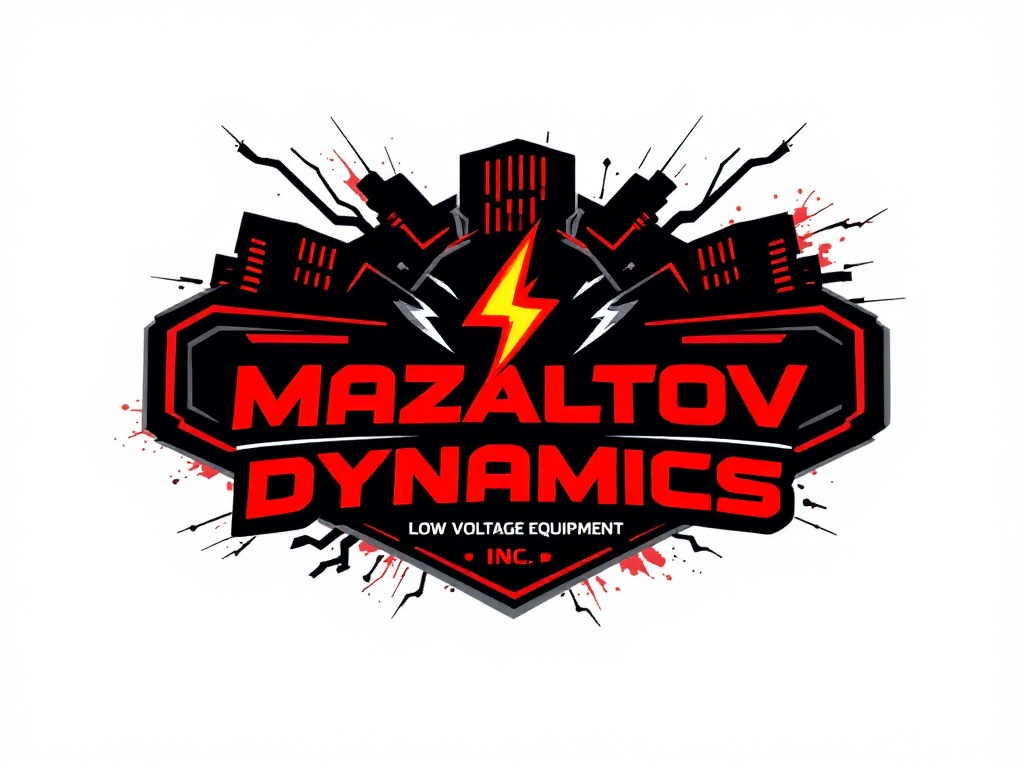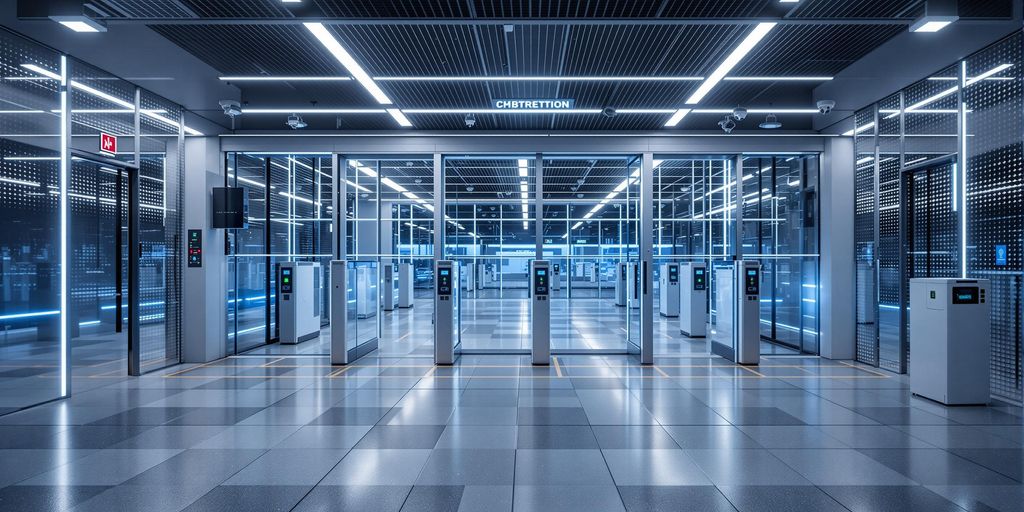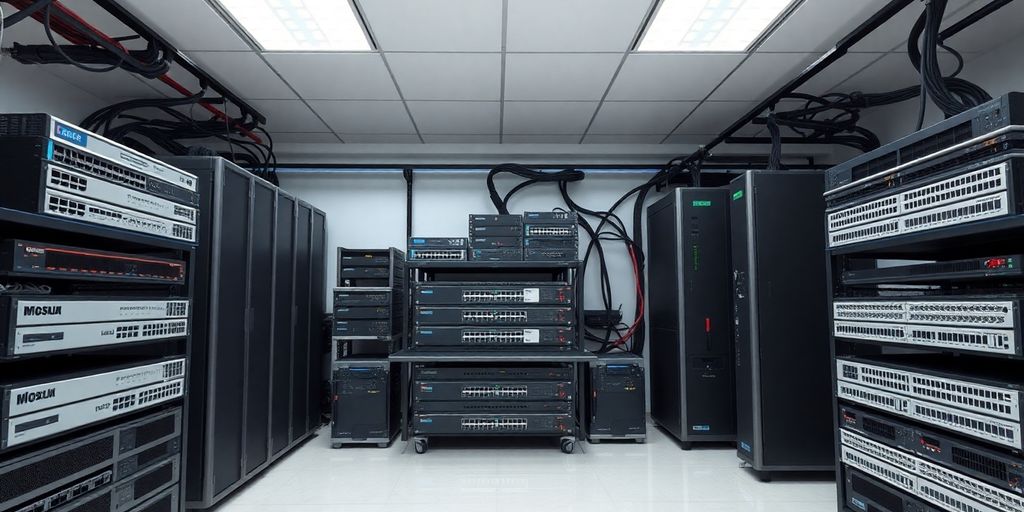Access control facilities are a big deal these days. They’re not just about keeping unwanted folks out; they’re about creating a seamless and efficient environment inside. Whether it’s a smart building or a high-security office, integrating these systems can really change how a place operates. It’s not just about doors and locks anymore. It’s about smart tech working together to make buildings safer, more efficient, and even a bit futuristic. So, let’s dive into some cool strategies for making access control a part of modern security systems.
Key Takeaways
- Integrating access control with smart systems can boost energy efficiency and security.
- Visitor management protocols are crucial for tracking and managing who enters a facility.
- Multi-factor authentication, like biometrics and mobile access, enhances security measures.
- Coordinating access control with emergency plans ensures quick and safe evacuations.
- Regular audits of access policies help in maintaining security and compliance.
Integrating Access Control Facilities With Smart Building Systems
Enhancing Energy Efficiency
Imagine walking into a room, and the temperature adjusts just for you. That’s what happens when access control teams up with smart building systems. When someone enters a space, the system can tweak the HVAC settings, ensuring energy isn’t wasted on empty rooms. This kind of integration not only cuts down on energy bills but also helps the environment. Lights can also switch on or off automatically, reducing unnecessary electricity use.
Automating Environmental Controls
Smart buildings are like living organisms, adjusting on the fly. With access control, you can automate a lot of things. For example, when a person enters a room, the system can adjust lighting and even control blinds to manage natural light. It’s like having a personal assistant for your building’s environment. This automation makes everything smoother and more efficient without anyone lifting a finger.
Improving Security Response
Security isn’t just about keeping people out; it’s about knowing who’s in. By combining smart locks with access control systems, buildings can quickly adapt to security needs. If an unauthorized person tries to enter, the system can alert security personnel immediately. Plus, integrating with other systems like video surveillance can provide a comprehensive view of what’s happening in real-time, ensuring a swift response to any potential threat.
Integrating access control with smart building systems is like giving your building a brain, making it smarter and more responsive to both security and energy needs.
Establishing Robust Visitor Management Protocols
Implementing Check-In Systems
Creating a visitor management system is all about ensuring that anyone stepping into your building is accounted for. A good check-in system is like your first line of defense. It not only logs who is coming in and out but also keeps track of when they arrive and leave. This can be done through digital kiosks or apps that visitors use to register themselves. Some systems even allow pre-registration, making the process smoother and quicker. This way, you have a clear record of all visitors, which is essential for both security and emergency situations.
Issuing Temporary Access Passes
Temporary access passes are handy for managing visitors. They’re like a key that only works for a short time, ensuring visitors can only access areas they are meant to be in. These passes can be time-sensitive, automatically expiring after a set period, which reduces the risk of unauthorized access. It’s important to have a system in place for issuing these passes efficiently, whether it’s through a visitor management software or manually at the reception.
Tracking Visitor Activity
Keeping an eye on visitor activity is crucial. This means not just knowing when they enter and exit, but also monitoring their movement within the building. Advanced systems can integrate with surveillance cameras, providing a comprehensive view of visitor activities. This data is invaluable for security audits and can help in identifying any unusual patterns or potential security breaches. Regular monitoring and analysis of this data ensure that your security protocols are always a step ahead of potential threats.
Implementing robust visitor management protocols is not just about keeping track of who comes and goes, but about creating a secure environment where everyone feels safe. It’s about having the right tools and processes in place to ensure that security is never compromised.
Utilizing Multi-Factor Authentication Techniques
In today’s digital landscape, securing access to sensitive information is more important than ever. Multi-factor authentication (MFA) is a game-changer in this regard, adding layers of security to protect against unauthorized access. Let’s explore some effective MFA techniques.
Biometric Access Verification
Biometric verification uses unique physical characteristics like fingerprints, facial recognition, or iris scans to confirm identity. This method is highly secure because these traits are difficult to replicate or steal. By incorporating biometric access verification, organizations can significantly reduce the risk of unauthorized entry, ensuring that only the right individuals gain access to critical resources.
ID Cards and Electronic Fobs
Traditional yet effective, ID cards and electronic fobs offer a reliable two-step authentication process. When paired with other methods, such as biometrics, they provide a robust security framework. These tools are especially useful in environments where physical access control is crucial, serving as a deterrent to potential intruders.
Mobile Access Solutions
With the rise of smartphones, mobile access solutions have gained popularity. This method allows users to access secure areas using their mobile devices, often through apps that use Bluetooth or NFC technology. It’s convenient and eliminates the need for physical cards or fobs, streamlining the authentication process while maintaining high security standards.
Implementing multi-factor authentication is not just about adding more security layers; it’s about choosing the right combination of methods that best fit your organization’s needs. Whether it’s through biometrics, ID cards, or mobile solutions, MFA helps safeguard sensitive data and systems from unauthorized access.
Coordinating Access Control With Emergency Response Plans

Establishing Clear Guidelines
When it comes to emergencies, having clear guidelines for access control is crucial. Think about it: in a crisis, every second counts. Establishing protocols that define who can access specific areas and when is essential. This means setting up rules that kick in automatically during emergencies, like unlocking all exits or restricting certain zones. The goal is to ensure that everyone knows what to do and where to go, reducing chaos and confusion.
Integrating With Emergency Systems
Integrating access control with emergency systems is like having a safety net. It ensures that your access control system works hand-in-hand with fire alarms, security alerts, and other emergency protocols. For instance, if a fire alarm goes off, the access control system should automatically unlock doors to facilitate a quick evacuation. This integration can also ensure that emergency responders have immediate access to critical areas, speeding up their response time.
Ensuring Safe Evacuation Procedures
Safe evacuation procedures are the cornerstone of any emergency response plan. A well-coordinated access control system can significantly enhance these procedures. Here are some steps to consider:
- Automated Door Controls: Ensure doors unlock automatically during emergencies to allow for quick exits.
- Clear Signage: Use signs that guide people to the nearest exit, especially in larger buildings.
- Regular Drills: Conduct evacuation drills to familiarize everyone with the procedures.
In emergencies, a well-integrated access control system can be the difference between chaos and order. By ensuring that access control systems are seamlessly integrated with emergency protocols, facilities can enhance their response capabilities and improve safety outcomes.
For those looking to improve their emergency preparedness, Distribution Management Plans can offer valuable insights into resource allocation and response strategies.
Centralizing Access Management for Enhanced Security
Centralizing access management is a game-changer for organizations looking to tighten security and streamline operations. By having a single point of control, companies can ensure consistent enforcement of access policies, making it easier to manage who gets access to what.
Real-Time Monitoring Capabilities
One of the standout benefits of centralizing access management is the ability to monitor access in real time. This means security teams can see who is accessing specific resources at any moment, allowing them to spot unusual activity quickly. Real-time insights are crucial for identifying potential breaches and responding promptly.
Scalability and Flexibility
Centralized systems are not just about security—they also offer scalability and flexibility. As your business grows, you can easily add or remove users and adjust permissions without hassle. This adaptability is vital as organizations expand and their access needs evolve.
Streamlining User Access Permissions
With centralized management, streamlining user permissions becomes straightforward. Instead of juggling multiple access lists, admins can manage everything from one place. Here’s how it helps:
- Simplifies User Management: Easily add or remove users, and adjust their access levels.
- Consistent Access Policies: Ensure everyone follows the same rules, reducing the risk of errors.
- Quick Adjustments: Make changes to user permissions swiftly as roles or responsibilities change.
Centralized access management is not just about keeping things secure; it’s about making security manageable and adaptable to change.
Conducting Regular Audits of Access Control Policies
Technical Audits for User Experience
Regular technical audits are like a health check-up for your system. They help identify hiccups in user experience, like clunky authentication processes or outdated user interfaces. By smoothing out these rough edges, you make the system more intuitive and efficient for everyone involved. A seamless user experience isn’t just a nice-to-have; it’s a must for maintaining a secure environment.
Security Audits for Threat Detection
Security audits are your detective work, sniffing out potential threats and vulnerabilities before they become a problem. These audits should be comprehensive, covering everything from unauthorized access attempts to unusual activity patterns. Think of it like tightening the bolts on your security framework. If something seems off, it’s better to catch it early.
Account Audits for Compliance
Account audits are all about making sure everything’s in line with your compliance requirements. This involves checking for orphaned accounts, shared credentials, or any unauthorized privilege escalations. It’s about ensuring that every user has the right level of access—no more, no less. Keeping things tidy here helps in maximizing the effectiveness of cybersecurity audits, ensuring your organization stays compliant and secure.
Regular audits are like the unsung heroes of access control. They might not be glamorous, but they’re essential for keeping your security measures in check and up-to-date. In a world where cyber threats are constantly evolving, staying vigilant is your best defense.
Designing a Multi-Layered Access Control System

Creating a robust and effective security solution involves multiple layers, each playing a key role in safeguarding your assets. Here’s how to build such a system:
Implementing Role-Based Controls
Role-Based Access Control (RBAC) is the backbone of a multi-layered system. It assigns access rights based on user roles, simplifying management and enhancing security. For instance, your finance team might have access to financial records, while HR data remains off-limits. This structure not only streamlines operations but also reduces the risk of unauthorized access.
Utilizing Firewalls and Access Lists
Firewalls and access control lists (ACLs) form the next layer of defense, acting as gatekeepers to your network. They monitor incoming and outgoing traffic, ensuring that only authorized users can access sensitive areas. By setting specific rules, you can prevent unauthorized users from breaching your network, adding an extra layer of security.
Training Employees on Security Practices
A well-informed workforce is one of your best defenses against security threats. Regular training sessions on password hygiene, recognizing phishing attempts, and understanding access controls can significantly reduce the risk of breaches. Employees who understand the importance of security protocols are less likely to make mistakes that could compromise the system.
Building a multi-layered access control system is not just about technology; it’s about creating a culture of security awareness. Every layer, from role-based controls to employee training, contributes to a safer environment.
Conclusion
In the end, setting up access control in today’s security systems isn’t just about keeping people out. It’s about creating a smart, responsive environment that adapts to who needs to be where and when. By integrating with other building systems, like lighting and HVAC, access control can make buildings more efficient and secure. It’s not just about technology; it’s about making sure the right people have access to the right places, at the right times. As threats evolve, so must our strategies, ensuring that our spaces are not only safe but also smart. So, whether you’re managing a small office or a large facility, embracing these innovative strategies will help keep everything running smoothly and securely.
Frequently Asked Questions
What are access control facilities?
Access control facilities are systems that manage who can enter or leave certain areas in a building. They help keep places safe by only letting the right people in.
How do smart building systems work with access control?
Smart building systems can connect with access control to adjust things like temperature and lights automatically when someone enters a room, saving energy and making security better.
Why is multi-factor authentication important?
Multi-factor authentication requires more than one way to prove who you are, like a password and a fingerprint. It makes it harder for someone to break into a system.
How can visitor management improve security?
Visitor management keeps track of who comes into a building. It can issue temporary passes and make sure visitors are only where they’re supposed to be.
What should be included in emergency response plans with access control?
Emergency plans should include clear rules for using access control during emergencies, like making sure exits are open and safe to use.
Why are regular audits of access control important?
Regular audits check that the access control systems are working right and help find any problems, like unauthorized access or outdated permissions.



